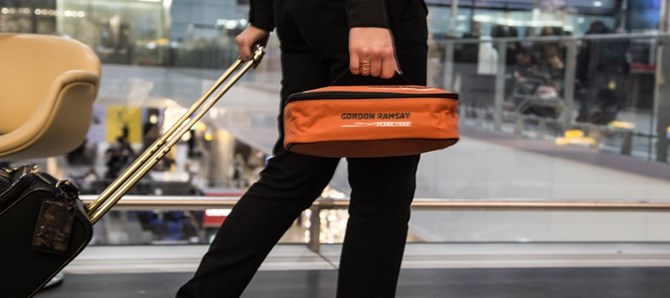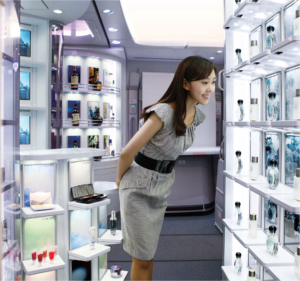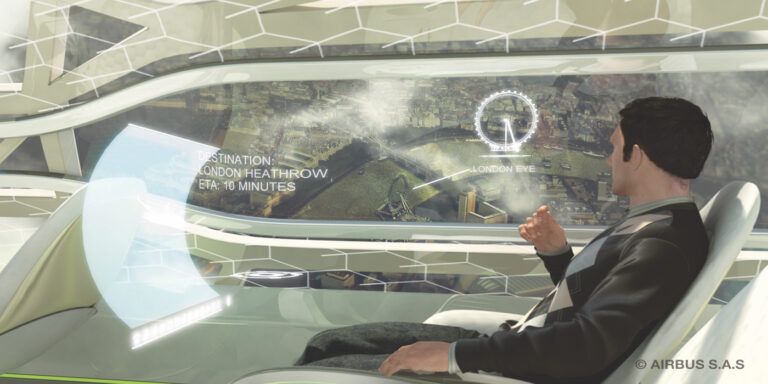For Ingo Wuggetzer, vice president of cabin marketing at Airbus (previously vice president of cabin innovation and design), a focus on passenger well-being is critical when designing any elements that affect the passenger experience. This well-being is ensured by catering to the physical and emotional needs of individual passengers.
As he says, “Customer satisfaction depends on passengers feeling in control and at ease in a familiar environment that accommodates their preferences, all the way from the booking process and throughout the duration of the journey.”
When designing the travel experience over the coming years, airlines will need to consider that the make-up of passengers will include increasing numbers of larger passengers, older passengers, technology-dependent passengers, and female business travelers. Those changing profiles necessitate a new product design paradigm.
Rather than continuing the traditional travel class-based product model, airlines would be best served by unbundling their products, Wuggetzer suggests, creating spaces that accommodate these various passenger profiles, and increasing their focus on services that make travel easier, more familiar and less disruptive to passengers’ everyday lifestyles.
Embrace technology
“Customers will become more dependent on electronic devices to measure and control every aspect of their lives,” Wuggetzer states.
Providing passengers with mobile companion apps that allow them to use their mobile devices to navigate the airport, board the aircraft and find their seat is one way to ensure a trouble-free travel experience, he says. The mobile companion app can be expanded to provide value-added services.
Airlines can also capitalize on the capabilities of PEDs, making it easier for passengers to enjoy their own content on board and remain productive while traveling. “As OLED screens become more widely available, airlines will be able to install these displays on seatbacks, as receivers for content transmitted by passengers’ PEDs. Advanced OLEDs, as well as providing exceptional graphic resolution, will also be extremely light and reduced in thickness to little more than a sheet of paper. They will provide weight and installation requirements advantages,” states Wuggetzer.
Fresh thinking for fresh food
Consumers are increasingly demonstrating a predilection for fresh foods made with locally sourced and organic ingredients. While strides are made through the hiring of expert chefs to coordinate special menus for first and business class passengers, selection is still limited by mass-production and deliverability.

Wuggetzer suggests that airlines allow passengers to use their mobile apps to order customized meals before boarding – perhaps delivered by restaurant chains present in terminals. They could be given to passengers as they board the aircraft, packed in trays that fit directly into the seatback. This would eliminate the need for tray tables, lightening seat structures. This food-service option would also enable smaller galleys, or even eliminate the need for them, resulting in substantial weight reduction and better use of cabin space.
Retail therapy
Wuggetzer expects the desire to shop as a method of passing the time to endure. He also believes that the consumer preference for using technology to make purchases will increase to the point where it becomes the norm. It follows that passengers will find an innovative onboard shopping option attractive.
“The current onboard shopping experience is outdated and unappealing to consumers,” states Wuggetzer. “Ads printed in inflight magazines, and products delivered on trolleys do not encourage passengers to buy.”
Technology can again be put to good use here, enticing passengers to spend by making shopping on board a delight. As an example, by providing an augmented reality interface that gives the passenger a better way to visualize products, airlines could more effectively tap-in to the retail pleasure principle.

Furthermore, he suggests, if technology is used to reduce the galley requirements for meals, the available space could be used to provide an attractive onboard shop, more in keeping with a boutique experience.
Wuggetzer also points to a passenger preference for home deliveries of purchases. Ensuring that passengers can have items delivered, instead of having to carry them around as they travel, may encourage more shopping. It could also result in reduced demand for stowage space. “Allowing passengers to ‘screen-shop’ items to be delivered to their door also provides a novel buying experience and makes it easier to complete purchases, which in turn encourages more buying,” adds Wuggetzer.
Comfort factors
Passengers suffer a number of complaints, including aching bones and joints, dry skin, nerves and jetlag. Aircraft interiors innovations should be focused on reducing or eliminating these conditions.
Inevitably, when discussing aircraft interiors, seats are a focal point. Lie-flat beds are great in first and business class, but as Wuggetzer says, “There is still room for improvement by carefully analyzing the ergonomic properties of seat structures. Manufacturers, designers and airlines should work with OEMs to identify and install seating that molds to the body, providing improved support,” he adds.
Passenger sizes vary, so seat sizes should as well. While Airbus proposes that the standard economy seat should be 18in (46cm) wide to provide enhanced comfort for the increasing number of larger passengers, airlines may find it attractive to provide variable seating. In the past Airbus has suggested that an extra-wide seat located at the aisle side of an economy triple (17in-17in-20in) might be an attractive option for airlines, allowing them to sell preferred larger seats in economy at a premium. Wuggetzer feels this proposal continues to have merit, though there are other ways to accommodate customers of various sizes in the economy cabin.
One solution, which would allow airlines to configure the aircraft for varying passenger sizes on a particular flight, would be a bench seat used as a ‘flex seat’ space. This seat would have armrests that could be adjusted according to passenger needs for seat width.
The importance of cabin lighting
Wuggetzer identifies cabin lighting as a great opportunity to ensure passenger health and well-being. Recent improvements have the potential to greatly reduce stress and influence the perception of space in the cabin. He tells us that when the intensity and wavelengths of that lighting are properly coordinated, there is an improvement in relaxation, and that providing lighting solutions that generate beneficial ‘natural’ light would reduce the negative health impacts of air travel.

OLED foil innovations will also contribute greatly to this aspect of the cabin environment. They are already in use as a design element in high-end bars and hotels, and manufacturers such as Philips continue to enhance and improve on them. “While the current cost is prohibitive for aviation, and the certification process to bring such innovations on board might take time, the technology could enhance the cabin environment,” says Wuggetzer.
As product improvement continues, this feature is likely to become much more economical. There will also be sufficient information on the performance of OLEDs to facilitate certification. When this development becomes more practical, it will enable airlines to install OLED sheets on galley walls and overhead ceilings, which could project moving, high-resolution images of open skies and clouds, for example, to generate a greater sense of space and a cabin that feels alive and less confining.
Climate control is also a factor of well-being, Wuggetzer states. “The industry should focus on innovations that deliver better control of temperature and humidity in the cabin. In the ideal aircraft of the future, each passenger will be able to control the amount and type of light they receive, as well as their preferred temperature. In the interim, there are opportunities to improve on existing systems.”
Changes in the IFE sphere
Wuggetzer feels that multiscreening will become more important in IFE. He believes that ensuring effective interfaces between the screen or screens installed on the aircraft, and the passengers’ own PEDs, is essential. Further developments in wi-fi connectivity will allow these connections to be automatic, eliminating the need for special adaptors or connectors.
Wuggetzer suggests that the industry look to current innovations such as Google Glass for inspiration.
He refers more to enhanced-reality and the responsive nature of the interface than to the device itself.

“Passengers will want more than films and TV as entertainment. They may at the same time want to play
a game related to the film franchise, or search for more information on the actors or for other entertainment related to a particular genre,” he says. “They may also want to access an online store to download the ebook of the film to their PED. They may even want to do all of this while updating the spreadsheet they need to complete, or the trip report they have to turn in.”





